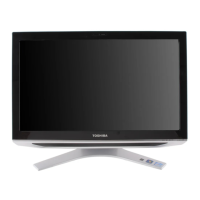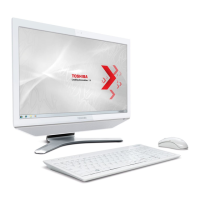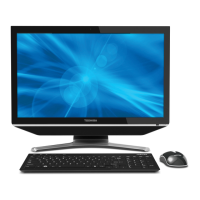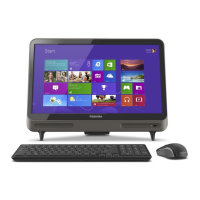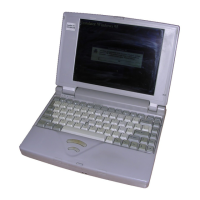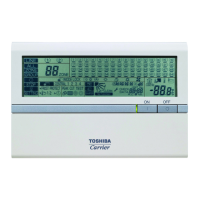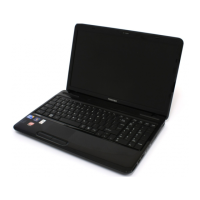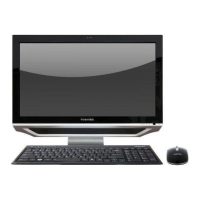
Do you have a question about the Toshiba DX1210 series and is the answer not in the manual?
Lists the hardware and documentation included with the computer for initial setup.
Details the pre-installed Windows operating system and utility software.
Provides instructions on how to connect the AC adaptor to power the computer.
Explains how to turn on the computer using the power button.
Describes how to place the computer into Sleep Mode to pause work.
Identifies and describes the computer's front, left, right, and back sides.
Details the front and back of the wireless keyboard and its buttons.
Describes the front and back of the wireless mouse and its functions.
Explains the functions and usage of the remote controller.
Covers CPU, Memory, Hard Disk Drive, Display, and other hardware components.
Details LAN, Bluetooth, and Wireless LAN capabilities.
Highlights unique or advanced features like Hot keys and Power Options.
Describes pre-installed software like PC Health Monitor and Face Recognition.
Explains how to use the touch screen and its precautions.
Details the Web Camera's functionality and usage instructions.
Provides instructions on using CD/DVD/Blu-ray drives.
Describes audio control functions, including volume and Realtek HD Audio Manager.
Covers Wireless LAN and Bluetooth technology and their operations.
Explains the basic typewriter keys and their computer usage.
Details the function keys (F1-F8) and their programmed functions.
Describes key combinations (FN + key) for system configuration.
Explains how to check the computer's power status via the Power indicator.
Covers setting up User and Supervisor passwords for security.
Details the three power-up modes: Shut Down, Hibernation, and Sleep.
Provides steps to run the TOSHIBA HWSetup program.
Describes the HWSetup window tabs like General, Password, and Boot Priority.
Explains how to set, change, or remove the user password.
Offers guidelines for identifying and resolving computer problems.
Suggests questions to ask when diagnosing computer malfunctions.
Discusses problems related to hardware and peripherals like keyboard, HDD, and LAN.
Troubleshooting steps for issues related to the computer's sound system.
Details operating and non-operating ambient temperature and humidity ranges.
Explains the function of the display controller and screen resolution.
Covers video mode settings and how to adjust display resolution.
Details Wireless LAN compatibility standards and certifications.
Describes Bluetooth compatibility standards and specifications.
Provides information on radio frequency usage restrictions by region.
Lists the certification agencies for AC power cords in various countries.
Explains how to start and enable the PC Health Monitor application.
Legal footnotes regarding CPU performance variations and conditions.
Legal footnotes on system memory usage for graphics and OS limitations.
Defines common abbreviations used throughout the manual.
